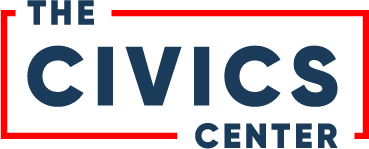What you can do
A note from a high school student asked what he could do to improve high school voter registration rates in his hometown. It got me thinking about creating a list of easy-to-use resources laying out what students can do on a personal level and in their schools to make a difference.
Before you get started, here is a quick note of encouragement. As you scan below, the list might look rather long. Most of you reading this are in high school or only recently graduated, so it might seem unfair to be on the receiving end of such a long list. You are right to feel that way. It is unfair. Beyond that, some of this work may feel lonely at times. It may feel daunting, or it may put you out of your comfort zone. Everybody feels that way at times.
But remember: Our democracy works best when everyone has a voice. The way to develop your voice is to use it. When you and your friends act together to promote civic participation in your community, you are part of a long tradition. Without your efforts, your generation will be disenfranchised. Your school and your community should do everything they can to help. Your collective action can include celebrations and joy and connection as you see your efforts take shape. Believe in yourself. Work with a friend. Set a goal. Ask for help. Join us.
Here goes.
First, of course, check your voter registration status and/or register to vote. Sign up for an absentee ballot so you can vote by mail.
Check out our videos and worksheets on high school voter registration drives.
Sign up for Future Voters Action Week, or one of the workshops we will be holding throughout the summer. You will join a community of young people committed to promoting democracy and youth voices.
Be a part of High School Voter Registration Week by organizing one of 1,000 voter registration drives before November 2020 and taking our pledge.
Ask your school to pledge its support.
Start a high school Future Voters Club or join an existing student group like YMCA Youth & Government, Junior State of America, a GSA or other affinity group like Girls Learn International, or work with any of our other partner organizations like New Georgia Project or Texas Civil Rights Project.
You can reach out to public officials to get their support, as well. This model resolution is directed to cities and neighborhood groups in California. We will be providing additional model resolutions over the course of the summer. In the meantime, if you are looking for help in modifying this to fit your community, please let us know.
Follow us on Instagram - @thecivicscenter. This is where you can find information about programs and actions. We can also help you start your own state or local Future Voters Instagram account. Students we have trained have already launched accounts in Arizona, California, Florida, Indiana, Maine, Michigan, Wisconsin, and other states and cities.
Lists can help you plot your progress. Try making a list of everyone you and your friends know from the Classes of 2020 and 2021, divide up the names, and text or message them to ask them to register to vote using the link on our website: www.thecivicscenter.org/register. Take a look at who is missing from your list, and make a plan to reach them, too, so that everyone is included.
Ask your parents or adult friends to sign up on our website as a volunteer to promote our work over the summer through postcarding, social media outreach, and more.
Read the 26th Amendment, which protects the right to vote beginning at age 18, and make sure you know how old you have to be to register to vote in your state.
* * *
What about adult allies? The best way for adult allies to help is to sign up as a volunteer. We can use your help in outreach, supporting students, hosting house parties, and more.
